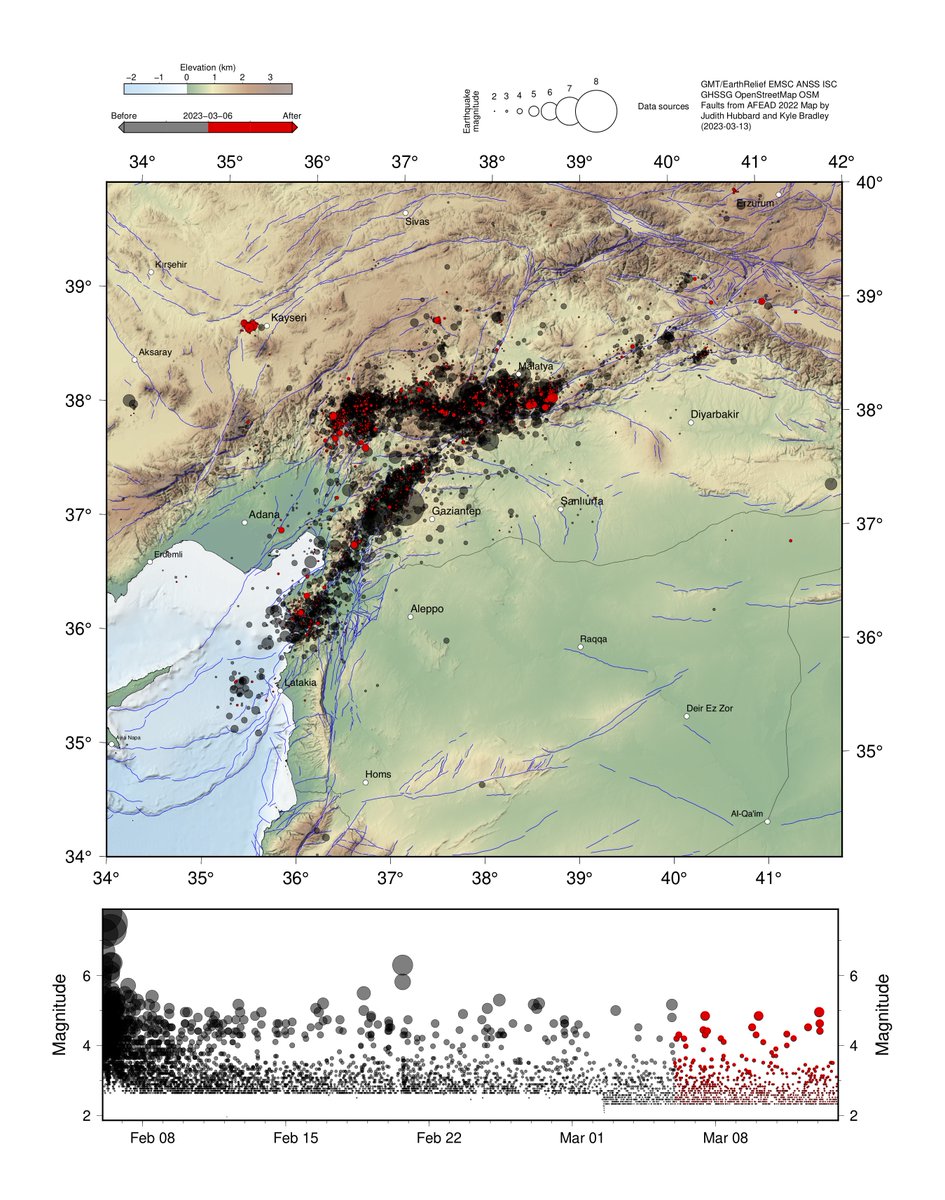
Where have aftershocks been occurring in the last week? This map shows seismicity since March 6 (red) with earlier aftershocks (gray). Mapped faults are in blue.
#TurkeySyriaearthquake
1/
#TurkeySyriaearthquake
1/

The central part of the M7.8 (~Gaziantep) is pretty quiet now, and Hatay has only moderate seismicity.
Aftershocks are concentrated along the northern part of the ruptures, especially on the eastern (~Malatya) and western (~Göksun) ends.
2/
Aftershocks are concentrated along the northern part of the ruptures, especially on the eastern (~Malatya) and western (~Göksun) ends.
2/
The time series shows that, as expected, the aftershocks are slowly decreasing, with the largest events ~M5. Larger aftershocks are still possible but less likely every day.
3/
3/
Remember that each step on the magnitude scale is a factor of 30x more energy - so compared to a M4, a M5 is 30x more powerful, and a M6 is 900x more powerful. These smaller aftershocks are much, much smaller than the main shocks and are normal after a big earthquake.
4/end
4/end
• • •
Missing some Tweet in this thread? You can try to
force a refresh













